A Passage from the Origins of Black History Month • asalh.org
The story of Black History Month begins in Chicago during the summer of 1915. An alumnus of the University of Chicago with many friends in the city, Carter G. Woodson traveled from Washington, D.C. to participate in a national celebration of the fiftieth anniversary of emancipation sponsored by the state of Illinois. Thousands of African Americans travelled from across the country to see exhibits highlighting the progress their people had made since the destruction of slavery. Awarded a doctorate in Harvard three years earlier, Woodson joined the other exhibitors with a black history display. Despite being held at the Coliseum, the site of the 1912 Republican convention, an overflow crowd of six to twelve thousand waited outside for their turn to view the exhibits. Inspired by the three-week celebration, Woodson decided to form an organization to promote the scientific study of black life and history before leaving town. On September 9th, Woodson met at the Wabash YMCA with A. L. Jackson and three others and formed the Association for the Study of Negro Life and History (ASNLH).
He hoped that others would popularize the findings that he and other black intellectuals would publish in The Journal of Negro History, which he established in 1916. As early as 1920, Woodson urged black civic organizations to promote the achievements that researchers were uncovering. A graduate member of Omega Psi Phi, he urged his fraternity brothers to take up the work. In 1924, they responded with the creation of Negro History and Literature Week, which they renamed Negro Achievement Week. Their outreach was significant, but Woodson desired greater impact. As he told an audience of Hampton Institute students, “We are going back to that beautiful history and it is going to inspire us to greater achievements.” In 1925, he decided that the Association had to shoulder the responsibility. Going forward it would both create and popularize knowledge about the black past. He sent out a press release announcing Negro History Week in February, 1926. Read more at: Association for the Study of African American Life and History (ASALH)
In honor of our Celebration of Black History Month 2023, please take a moment to read about some of America's greatest African American and Black scholars, entertainers, civil rights activists, icons, artists, entrepreneurs, and history makers:
The Nicholas Brothers
Fayard Nicholas (1914-2006) • Harold Nicholas (1921-2000)
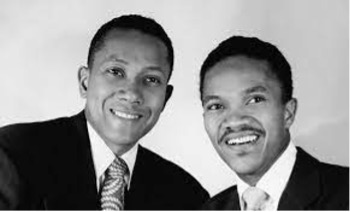 Lauded as the greatest tap-dancing duo of their day, the Nicholas Brothers were still boys when they were featured at New York's Cotton Club in 1932, and were billed as The Show Stoppers! They were known for their fearless acrobatics, including a highly acrobatic technique known as flash dancing. Despite racial hurdles that faced Black performers, they went on to Broadway then Hollywood. Fred Astaire once told the brothers that the acrobatic elegance and synchronicity of their dance sequence “Jumpin' Jive" in the movie “Stormy Weather" made it the greatest movie musical number he had ever seen.
Lauded as the greatest tap-dancing duo of their day, the Nicholas Brothers were still boys when they were featured at New York's Cotton Club in 1932, and were billed as The Show Stoppers! They were known for their fearless acrobatics, including a highly acrobatic technique known as flash dancing. Despite racial hurdles that faced Black performers, they went on to Broadway then Hollywood. Fred Astaire once told the brothers that the acrobatic elegance and synchronicity of their dance sequence “Jumpin' Jive" in the movie “Stormy Weather" made it the greatest movie musical number he had ever seen.
Producer Samuel Goldwyn of MGM saw them at the Cotton Club and, impressed by their entertaining performance, invited them to California to be a part of Kid Millions (1934), which was their first role in a Hollywood movie. The Nicholas brothers received a bevy of awards and honors including a star on the Hollywood Walk of Fame, and danced for nine different presidents of the United States.
See their famous performance here:
Jumpin' Jive:
Marian Anderson (1897-1993)
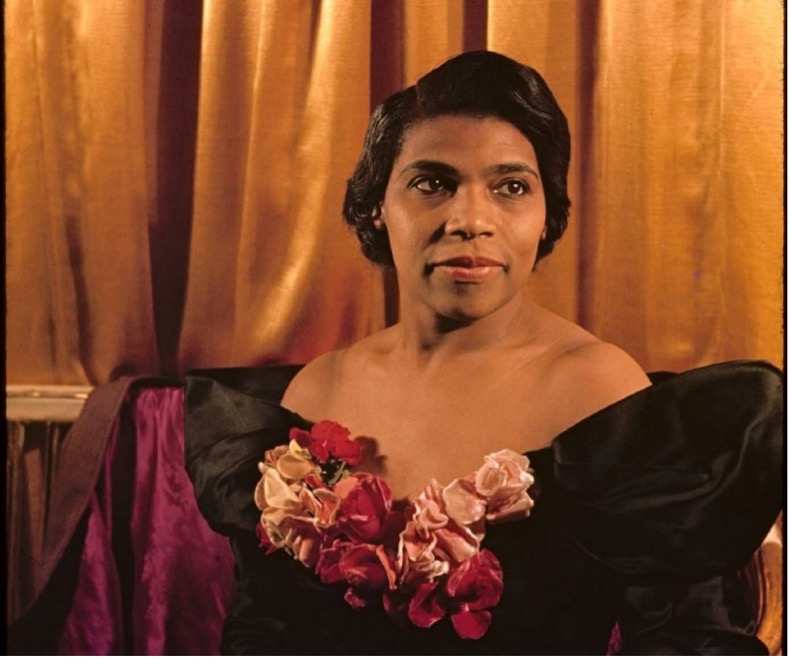
![]()
Marian Anderson was an American contralto and musical icon who garnered fame in the United States, and also became the toast of Europe by singing for command performances before King Gustav in Stockholm and King Christian in Copenhagen. As a young Black woman from South Philadelphia who could superbly deliver Russian folk songs, classic German and French arias as well as Negro Spirituals, she was a wonder and people flocked to hear her. The success she encountered in Europe brought her back to America in 1935 for a public debut at Carnegie Hall in New York. The day before the performance, while in France, Marian fell and broke her ankle. Determined to make her appearance, she performed the entire program standing on one foot, balancing against the piano, with her floor-length gown covering the cast on her ankle.
In 1939 when Marian's manager and Howard University tried to secure a performance for her at Constitution Hall in Washington D.C. The Daughters of the American Revolution, who owned the Hall, refused to accommodate Anderson because she was Black. The rebuff was widely publicized when Eleanor Roosevelt, herself a member of the D.A.R., publicly resigned from the organization in protest. In response, Eleanor and the Marian Anderson Committee arranged for Marian to give her concert on the steps of the Lincoln Memorial with the Mall of Washington as her auditorium. Symbolically, the concert took place on Easter Sunday, April 9, 1939. The sun was shining as 75,000 people of all races crowded together.
Anderson at the Lincoln Memorial:
Marian Anderson's Performance
Maya Angelou (1928-2014)
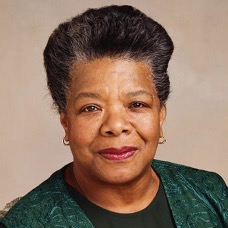 The author of seven autobiographies, along with several books of poetry and essays, Maya Angelou's work has profoundly affected the dialogue around race in America. Prior to her national introduction for her literary prowess, Maya Angelou engaged in a variety of professions, including actor, dancer, singer, activist and journalist. She garnered many recognitions as the first Black woman to do so such as: the first Black woman to speak at an inauguration, the first Black woman minted on US currency and when Angelou was a teen on hiatus from high school, she made history in 1943 by becoming San Francisco's first Black streetcar conductor.
The author of seven autobiographies, along with several books of poetry and essays, Maya Angelou's work has profoundly affected the dialogue around race in America. Prior to her national introduction for her literary prowess, Maya Angelou engaged in a variety of professions, including actor, dancer, singer, activist and journalist. She garnered many recognitions as the first Black woman to do so such as: the first Black woman to speak at an inauguration, the first Black woman minted on US currency and when Angelou was a teen on hiatus from high school, she made history in 1943 by becoming San Francisco's first Black streetcar conductor.
Maya Angelou was inspired to write her most famous book, “I Know Why The Caged Bird Sings," amid a deep depression following the assassination of Martin Luther King Jr. Fellow author James Baldwin, who was a friend, helped her editor persuade her to write it. Baldwin told Maya Angelou's manager, “to get Angelou to do anything, you have to tell her she can't do it". The reverse psychology worked. She isolated herself in London and began writing. It was an instant bestseller that is now taught in high schools, colleges and independent organizations, globally.
Frances Ellen Watkins Harper
(1825-1911)
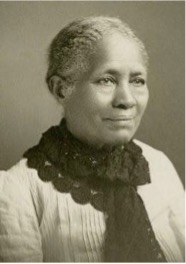 Known as the “mother of African American journalism," Frances E. W. Harper had a long career that began with a book of poetry and ended half a century later with the publication of her highly acclaimed novel, “Iola Leroy," in 1892. As a poet, author, and lecturer, Frances Ellen Watkins Harper was the first African American woman to publish a short story, in 1959, but was also an influential abolitionist, suffragist, and reformer that co-founded the National Association of Colored Women's Clubs.
Known as the “mother of African American journalism," Frances E. W. Harper had a long career that began with a book of poetry and ended half a century later with the publication of her highly acclaimed novel, “Iola Leroy," in 1892. As a poet, author, and lecturer, Frances Ellen Watkins Harper was the first African American woman to publish a short story, in 1959, but was also an influential abolitionist, suffragist, and reformer that co-founded the National Association of Colored Women's Clubs.
Born free, she helped escaped enslaved people navigate the Underground Railroad. In 1858, a century before Rosa Parks, Frances Harper refused to give up her seat in the white section of a segregated trolley car in Philadelphia.
Known for writing “poetry of freedom" many of Frances' poems and stories were critical of white supremacy in the United States. In her old age, Frances E. W. Harper was a mentor to Ida B. Wells and thus passed along her strength to the next generation of Black legends.
Make me a grave where'er you will
In a lowly plain, or a lofty hill;
Make it among earth's humblest graves,
But not in a land where men are slaves.
-Frances E. W. Harper
Louis Jordan
(1908-1975
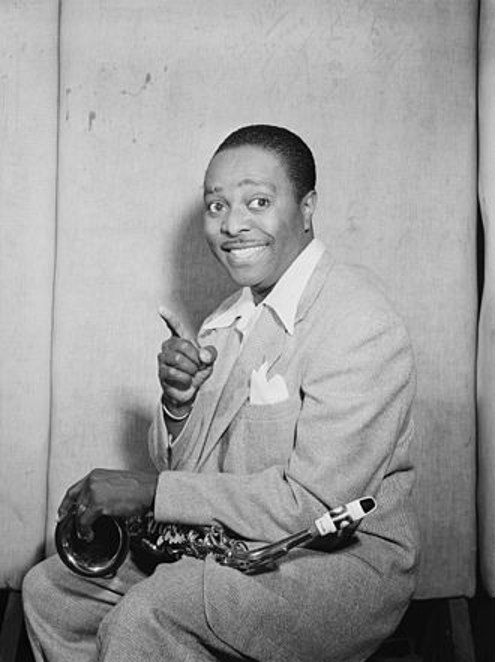 Effervescent saxophonist Louis Jordan was one of the chief architects and prime progenitors of the R&B idiom. His pioneering use of jumping shuffle rhythms in a small combo context was copied far and wide during the 1940s.
Effervescent saxophonist Louis Jordan was one of the chief architects and prime progenitors of the R&B idiom. His pioneering use of jumping shuffle rhythms in a small combo context was copied far and wide during the 1940s.
The son of a musician, Jordan spent time as a youth with the Rabbit Foot Minstrels and majored in music later on at Arkansas Baptist College. Louis Jordan had a profound impact on several African American music genres that evolved during the first half of the 20th century. He simplified swing music and helped make jump blues, jazz and boogie-woogie mainstream forces. Jordan's legendary work would serve as a precursor to modern blues, rock and roll and R&B music.
From 1942 to 1951, Jordan scored an astonishing 57 R&B chart hits, and he was one of the first Black entertainers to sell appreciably in the pop sector. His music label duet mates included Bing Crosby, Louis Armstrong, and Ella Fitzgerald. Ray Charles had long cited Jordan as a primary influence in his own music performance.
James Weldon Johnson
(1871-1938)
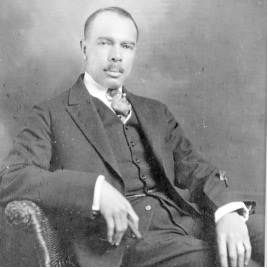 A key figure of the Harlem Renaissance, James Weldon Johnson was a man of many talents. Not only was he a distinguished lawyer and diplomat who served as executive secretary at NAACP for a decade, he was also a composer who wrote the lyrics for "Lift Every Voice and Sing," known as the Black national anthem.
A key figure of the Harlem Renaissance, James Weldon Johnson was a man of many talents. Not only was he a distinguished lawyer and diplomat who served as executive secretary at NAACP for a decade, he was also a composer who wrote the lyrics for "Lift Every Voice and Sing," known as the Black national anthem.
Through the course of his wide-ranging career, Johnson developed a unique philosophy on achieving equality for Blacks and combating racism. He believed Black Americans should produce great literature and art to demonstrate their equality to whites in terms of intellect and creativity.
A human rights activist, Johnson worked as a U.S. consul under President Theodore Roosevelt and taught literature at the historically Black college Fisk University
Johnson died in 1938 at the age of 67 in a car accident. He had established his place within the Harlem Renaissance with The Autobiography of an Ex-Colored Man, republished in 1927, his poetry collection God's Trombones: Seven Negro Sermons in Verse (1927), and the anthology he compiled and edited, The Book of American Negro Poetry (1922).
Lorraine Hansberry
(1930-1965)
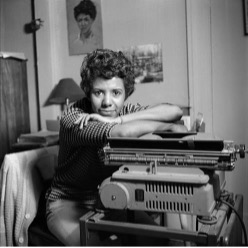 Lorraine Hansberry boasts the title of being the first Black female playwright to have her script performed on Broadway. She is the author of the famous play “A Raisin in the Sun" which is considered to be one of the most important plays written about Chicago.
Lorraine Hansberry boasts the title of being the first Black female playwright to have her script performed on Broadway. She is the author of the famous play “A Raisin in the Sun" which is considered to be one of the most important plays written about Chicago.
In 1938, Hansberry's father purchased a home in the Washington Park Subdivision of Chicago, which outraged his white neighbors. Subsequently, the neighbors filed a lawsuit to force out the Hansberry family. Her father fought back and led the anti-segregation case which reached the Supreme Court as Hansberry v. Lee.
Despite being married, Hansberry secretly affirmed her homosexuality in various correspondence and in short stories later discovered in archives. She continued to write plays, short stories, and articles in addition to delivering speeches regarding race relations in the United States, and became close friends with James Baldwin and Nina Simone. It was with those friends that she kept a secret about the pancreatic cancer that would eventually take her life on January 12, 1965, at age 34. Simone penned the song “Young, Gifted and Black" in tribute to her good friend.
Gwendolyn Brooks
(1917-2000)
 Gwendolyn Brooks is one of the most highly regarded, influential, and widely read poets of 20th-century American poetry. She was a much-honored poet, even in her lifetime, with the distinction of being the first Black author to win the Pulitzer Prize. She also was poetry consultant to the Library of Congress—the first Black woman to hold that position—and poet laureate of the State of Illinois.
Gwendolyn Brooks is one of the most highly regarded, influential, and widely read poets of 20th-century American poetry. She was a much-honored poet, even in her lifetime, with the distinction of being the first Black author to win the Pulitzer Prize. She also was poetry consultant to the Library of Congress—the first Black woman to hold that position—and poet laureate of the State of Illinois.
Many of Brooks' works display a political consciousness, especially those from the 1960s and later, with several of her poems reflecting the civil rights activism, racial identity and equality of that period. Brooks managed to bridge the gap between the academic poets of her generation in the 1940s and the young Black militant writers of the 1960s.
Sojourner Truth
(1797-1883)
 Sojourner Truth was born Isabella Baumfree in 1797 to enslaved parents in New York. Around age nine, she was sold at an auction for $100, along with a flock of sheep.
Sojourner Truth was born Isabella Baumfree in 1797 to enslaved parents in New York. Around age nine, she was sold at an auction for $100, along with a flock of sheep.
Sojourner Truth was of New York Dutch heritage, and was an African American evangelist, abolitionist, women's rights activist and author. Although born into slavery, she escaped with her infant daughter to freedom in 1826. After going to court to recover her son from the plantation owner who still enslaved him, she became the first Black woman to sue a White man, and win.
She gave herself the name Sojourner Truth in 1843 after she became convinced that God had called her to leave the city and go into the countryside, "testifying the hope in her." Her best-known speech was delivered extemporaneously, in 1851, at the Ohio Women's Rights Convention in Akron, Ohio. In 1864 President Abraham Lincoln invited her to the White House as a result of her activism for the abolitionist movement.
Elizabeth Keckley
(1818-1907)
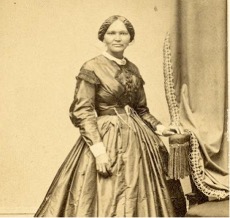 Elizabeth Keckley was born in Virginia in 1818. She was the child of a forced sexual relationship between her mother, Agnes, and Agnes's enslaver, Colonel Amistad Burwell. Although she was half white, Elizabeth inherited the status of an enslaved person from her mother. Agnes was a seamstress and taught Elizabeth her skills, which Elizabeth used later in her life to open her own dress shop and hire twenty assistants. Her skills afforded her the opportunity to become the dressmaker for Abraham Lincoln's wife.
Elizabeth Keckley was born in Virginia in 1818. She was the child of a forced sexual relationship between her mother, Agnes, and Agnes's enslaver, Colonel Amistad Burwell. Although she was half white, Elizabeth inherited the status of an enslaved person from her mother. Agnes was a seamstress and taught Elizabeth her skills, which Elizabeth used later in her life to open her own dress shop and hire twenty assistants. Her skills afforded her the opportunity to become the dressmaker for Abraham Lincoln's wife.
In 1868, Elizabeth Keckley published her memoir Behind the Scenes, or, Thirty years a Slave, and Four Years in the White House. This revealing narrative reflected on Elizabeth's fascinating story, detailing her life experiences from slavery to her successful career as First Lady Mary Todd Lincoln's dressmaker. After the memoir was published in 1868 Mary Todd Lincoln and Keckly never spoke again. The designer went on to lead the dress department at Wilberforce University, the nation's first college established and owned by Black educators.
Carter G. Woodson
(1875-1950)
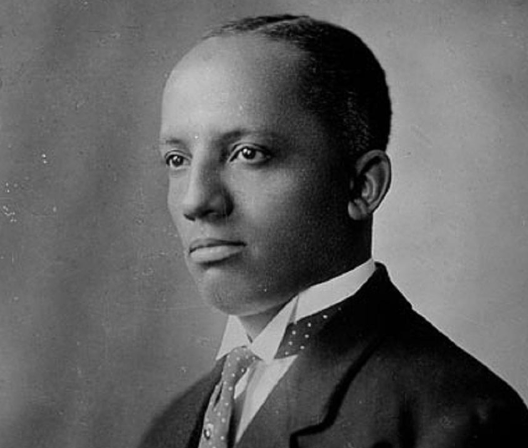 No one has played a greater role in helping all Americans know Black history than Carter G. Woodson, the individual who created Negro History Week in Washington, D.C., in February 1926. Woodson chose the second week of February in order to celebrate the birthday of Lincoln and Frederick Douglass. It is important to realize that Negro History Week was not born in a vacuum. The 1920s saw the rise in interest in African American culture that was represented by the Harlem Renaissance.
No one has played a greater role in helping all Americans know Black history than Carter G. Woodson, the individual who created Negro History Week in Washington, D.C., in February 1926. Woodson chose the second week of February in order to celebrate the birthday of Lincoln and Frederick Douglass. It is important to realize that Negro History Week was not born in a vacuum. The 1920s saw the rise in interest in African American culture that was represented by the Harlem Renaissance.
Woodson had two goals. One was to use history to prove to white America that Blacks played important roles in the creation of America and thereby deserve to be treated equally as citizens. His other goal was to increase the visibility of Black life and history, at a time when few newspapers, books, and universities took notice of the Black community, except to dwell upon the negative. Ultimately Woodson believed Negro History Week—which became Black History Month in 1976—would be a vehicle for racial transformation forever.
Woodson was the second Black American to receive a PhD in history from Harvard, following W.E.B. Du Bois by a few years.
Robert Sengstacke Abbott
(1870-1940)
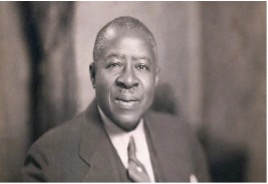 Born on December 24, 1870 to formerly enslaved parents in St. Simons, Georgia, Robert Sengstacke Abbott attended Hampton Institute in Virginia and then went on to graduate from Kent Law School in 1899. In May 1905 he started publishing the Chicago Defender, a weekly Black newspaper covering issues relevant to African Americans. In the early years he personally sold subscriptions to the paper and advertising by going door-to-door.
Born on December 24, 1870 to formerly enslaved parents in St. Simons, Georgia, Robert Sengstacke Abbott attended Hampton Institute in Virginia and then went on to graduate from Kent Law School in 1899. In May 1905 he started publishing the Chicago Defender, a weekly Black newspaper covering issues relevant to African Americans. In the early years he personally sold subscriptions to the paper and advertising by going door-to-door.
The paper attacked racial injustice, particularly lynching in the south. The Defender did not use the words “Negro" or “black" in its pages. Instead, African Americans were referred to as “the Race" and black men and women as “Race men and Race women." Many places in the south effectively banned the paper, especially when, during World War I, Abbott actively tried to convince southern blacks to migrate to the north.
Robert Abbott's contribution to African American political discourse cannot be overstated.
Charles Henry Turner
(1867-1923)
 Charles Henry Turner was a biologist, neurologist, and psychologist who was a pioneer in animal cognition studies. He was a pioneer of the comparative psychology and animal behavior movement in America, and one of the most influential scientists in the 1890s through the 1920s.
Charles Henry Turner was a biologist, neurologist, and psychologist who was a pioneer in animal cognition studies. He was a pioneer of the comparative psychology and animal behavior movement in America, and one of the most influential scientists in the 1890s through the 1920s.
He was one of the first African Americans to earn a PhD from the University of Chicago, and in 1892, was the first Black scientist to be published in Science, the prestigious journal of the American Association for the Advancement of Science.
He made groundbreaking discoveries in the field of animal behavior, which went against the prevailing ideas of the time that suggested animals were not capable of complex cognition. Among his many discoveries, he was the first to prove that insects have the capacity to hear, that they can learn by trial and error, and showed how bees use olfactory and visual cues to find nectar.
He published 71 papers throughout his lifetime, including three in Science. However, this pioneering research was all but forgotten, resulting in many white scientists "rediscovering" his findings up to a century later.
Octavia Estelle Butler
(1947-2006)
 Octavia E. Butler was a renowned African American author who received a MacArthur “Genius" Grant and PEN West Lifetime Achievement Award for her body of work. Born in Pasadena in 1947, she was raised by her mother and her grandmother. She was the author of several award-winning novels including Parable of the Sower (1993), which was a New York Times Notable Book of the Year, and Parable of the Talents (1995) winner of the Nebula Award for the best science fiction novel published that year. She was acclaimed for her lean prose, strong protagonists, and social observations in stories that range from the distant past to the far future.
Octavia E. Butler was a renowned African American author who received a MacArthur “Genius" Grant and PEN West Lifetime Achievement Award for her body of work. Born in Pasadena in 1947, she was raised by her mother and her grandmother. She was the author of several award-winning novels including Parable of the Sower (1993), which was a New York Times Notable Book of the Year, and Parable of the Talents (1995) winner of the Nebula Award for the best science fiction novel published that year. She was acclaimed for her lean prose, strong protagonists, and social observations in stories that range from the distant past to the far future.
Commonly considered the “foremost Black woman in sci-fi literature," Octavia Butler, the author of “Bloodchild" and other popular science fiction books, was the first sci-fi writer ever to get a MacArthur Foundation fellowship. Her books contain radical visions of race and power.
Her life's work significantly impacted her genre and how she encouraged and mentored young science-fiction writers of color.
Her book “Kindred" was adopted into a television series 2022, and can currently be viewed on Hulu.
Arthur Mitchell
(1934- 2018)
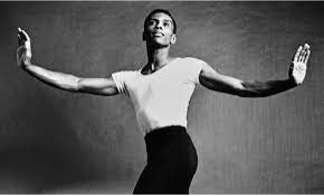 Born March 27, 1934 in Harlem, New York. Arthur Mitchell was the first black ballet dancer to break barriers as an iconic dancer in the 1950s and 1960s. He was the co-founder of the Dance Theater of Harlem, the nation's first major Black classical company. In 1955, he was the first African-American dancer with the New York City Ballet, where he was promoted to principal dancer. In 1996, Mitchell left the New York City Ballet to perform in various Broadway shows. He shared his talents by establishing other ballet companies in Washington, D.C, Spoleto, and Brazil. Mitchell choreographed a great number of ballets for the company before it was disbanded. In 2012, the troupe was revived and Mitchell became the artistic director.
Born March 27, 1934 in Harlem, New York. Arthur Mitchell was the first black ballet dancer to break barriers as an iconic dancer in the 1950s and 1960s. He was the co-founder of the Dance Theater of Harlem, the nation's first major Black classical company. In 1955, he was the first African-American dancer with the New York City Ballet, where he was promoted to principal dancer. In 1996, Mitchell left the New York City Ballet to perform in various Broadway shows. He shared his talents by establishing other ballet companies in Washington, D.C, Spoleto, and Brazil. Mitchell choreographed a great number of ballets for the company before it was disbanded. In 2012, the troupe was revived and Mitchell became the artistic director.
When The New York Times asked him what he considered his greatest achievement, he said, “That I actually bucked society, and an art form that was three, four hundred years old, and brought black people into it."
Gladys West
(1930-present)
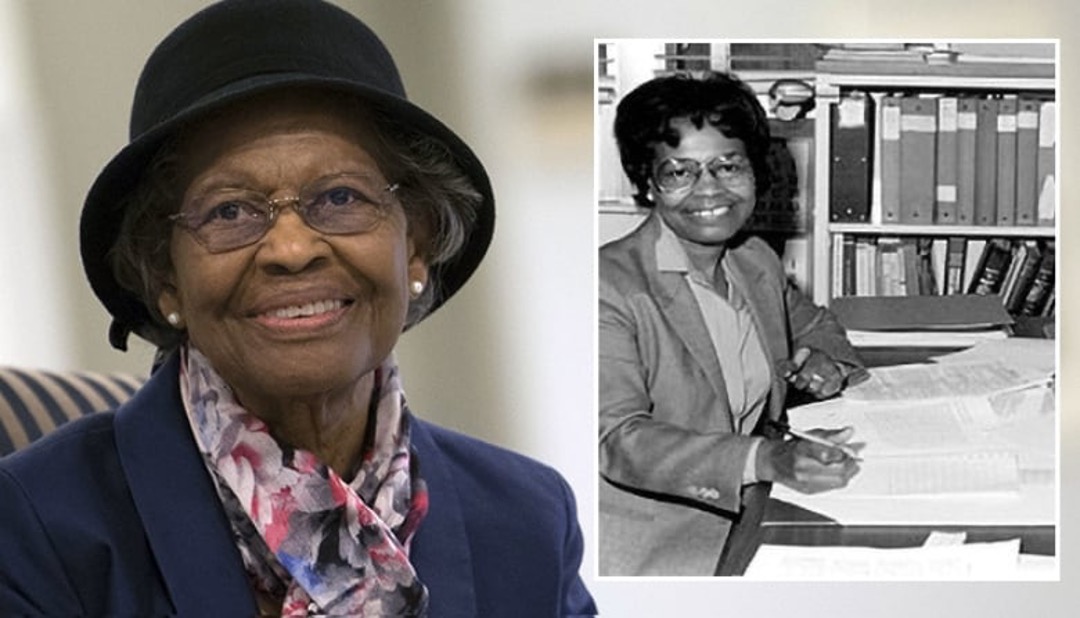 Gladys West is known as the mathematician who gave us GPS. Her extremely detailed model of the Earth became the foundation of GPS that is used today in countless applications, including navigation and communication.
Gladys West is known as the mathematician who gave us GPS. Her extremely detailed model of the Earth became the foundation of GPS that is used today in countless applications, including navigation and communication.
Born in 1930 in a small community in Virginia, West fantasized about escaping rural life, and felt that education was her only way out. She earned top grades to win a full scholarship to Virginia State College, and took on babysitting and teaching jobs to support herself.
In 1956, shortly after graduating with a master's in mathematics, she was hired by the U.S. Naval Surface Warfare Center, at the time becoming only the second Black woman ever to be hired at the facility. It was here that she created the detailed mathematical model of the shape of the Earth, which accounted for things like gravitational and tidal forces that change the Earth's shape.
After retiring in 1998, and recovering from a stroke, she went back to school to earn her PhD at the age of 70. It was only in 2017, after the release of the movie Hidden Figures, that she started to receive recognition for her role in revolutionizing navigation.
Nathaniel Adams Coles
(1919-1965)
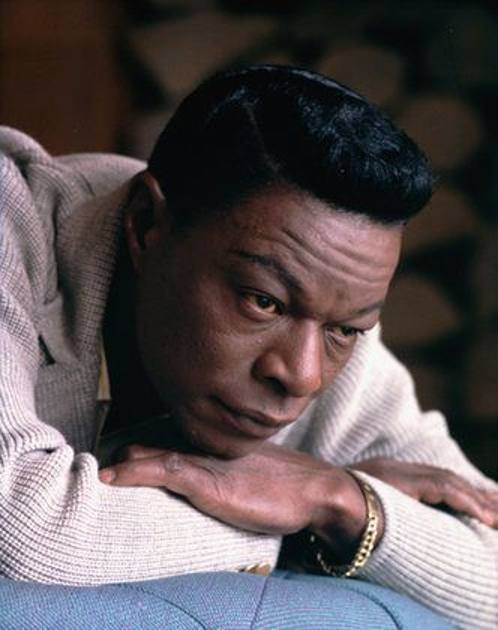 Known professionally as Nat King Cole, he became the first African American performer to host a variety TV series in 1956. For many white families, he was the first Black man welcomed into their living rooms each night. He is best known for his soft baritone voice and for singles like "The Christmas Song," "Mona Lisa" and "Nature Boy."
Known professionally as Nat King Cole, he became the first African American performer to host a variety TV series in 1956. For many white families, he was the first Black man welcomed into their living rooms each night. He is best known for his soft baritone voice and for singles like "The Christmas Song," "Mona Lisa" and "Nature Boy."
Cole's music career began after he dropped out of school at the age of 15 and continued for the remainder of his life. Cole would also go on to create the template for the jazz ensemble with his iconic trio, before becoming a huge TV and movie star at a time when the transition from music to film was by no means a regular occurrence.
Daisy Bates
(1914-1999)
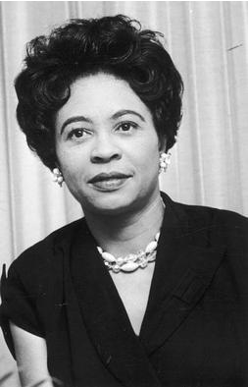 When Daisy Bates was three years old her mother was killed by three white men. The racially motivated murder forced Bates to confront racism at an early age, and pushed her to dedicate her life to ending racial injustice. Bates went on to start a newspaper with her husband, which was one of the only African American newspapers solely dedicated to the Civil Rights Movement. She was also the president of the NAACP, Arkansas chapter, and organized the Little Rock Nine school integration in 1957. Bates selected the nine students to integrate Central High School, and regularly drove the students to school to ensure they were protected from the violent crowds.
When Daisy Bates was three years old her mother was killed by three white men. The racially motivated murder forced Bates to confront racism at an early age, and pushed her to dedicate her life to ending racial injustice. Bates went on to start a newspaper with her husband, which was one of the only African American newspapers solely dedicated to the Civil Rights Movement. She was also the president of the NAACP, Arkansas chapter, and organized the Little Rock Nine school integration in 1957. Bates selected the nine students to integrate Central High School, and regularly drove the students to school to ensure they were protected from the violent crowds.
Bates died on November 4th, 1999. For her work, the state of Arkansas proclaimed the third Monday in February, Daisy Gatson Bates Day. She was posthumously awarded the Medal of Freedom in 1999.
Michael Jordan
(1963-Present)
 Few in NBA history can match the accolades, awards and championships Michael Jordan amassed in his days with the Bulls. By acclamation, Michael Jordan is the greatest basketball player of all time. Although, a summary of his basketball career and influence on the game inevitably fails to do it justice, as a phenomenal athlete with a unique combination of fundamental soundness, grace, speed, power, artistry, improvisational ability and an unquenchable competitive desire, Jordan single-handedly redefined the NBA superstar.
Few in NBA history can match the accolades, awards and championships Michael Jordan amassed in his days with the Bulls. By acclamation, Michael Jordan is the greatest basketball player of all time. Although, a summary of his basketball career and influence on the game inevitably fails to do it justice, as a phenomenal athlete with a unique combination of fundamental soundness, grace, speed, power, artistry, improvisational ability and an unquenchable competitive desire, Jordan single-handedly redefined the NBA superstar.
Even contemporaneous superstars recognized the unparalleled position of Jordan. Magic Johnson said, “There's Michael Jordan and then there is the rest of us."
Jordan has been deeply involved in the Charlotte community from a philanthropic perspective, even opening a health clinic to help communities during the pandemic.
Jordan's global impact upon youth from all races exceeds measurement.
Gordon Parks
(1912-2006)
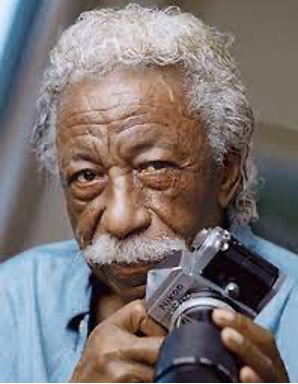 Gordan Parks was a self-taught photographer, writer, composer, and filmmaker. He was the first African American photographer who worked for Vogue magazine.
Gordan Parks was a self-taught photographer, writer, composer, and filmmaker. He was the first African American photographer who worked for Vogue magazine.
Born in 1912, Parks was the youngest of 15 children in a family deeply affected by the racial terror used to enforce Jim Crow segregation. When Parks lost his mother at 15, he moved from Kansas to Minnesota, to live with his sister. He was exposed to both urban and rural poverty and the racial hierarchies of the South and North: he survived an attempted lynching; endured a period of homelessness; composed a radio hit; worked as a waiter; toured with a semi-professional basketball team; played in a traveling orchestra; planted trees with the Civilian Conservation Corps; and became a father.
In 1949, he became the first African American staff photographer at Life magazine; in 1969, he became the first African American to direct a major Hollywood film, The Learning Tree. Parks was an advocate for civil rights and tackled issues of race, poverty, and policing in America throughout his career.
“I chose my camera as a weapon against
all the things I dislike about America—
poverty, racism, discrimination."
-Gordon Parks
https://youtu.be/gQLUbdp7fqA

